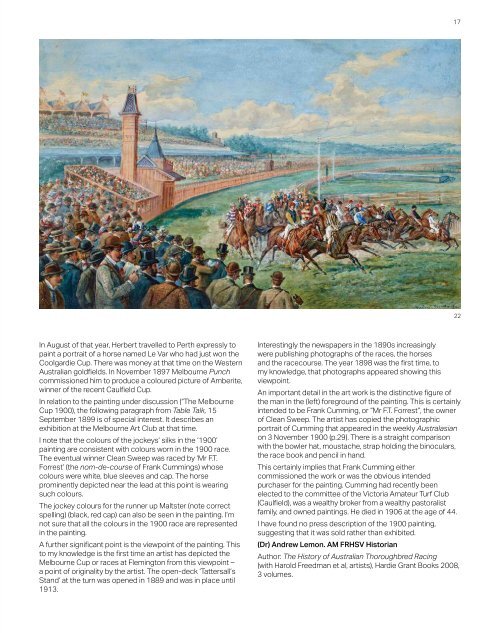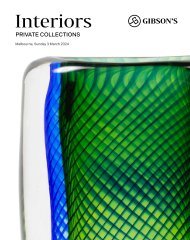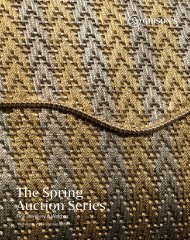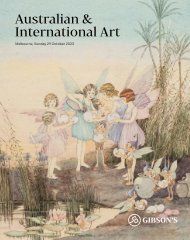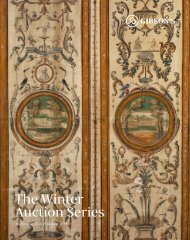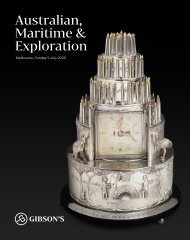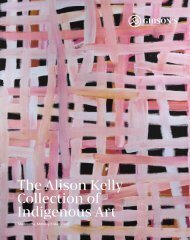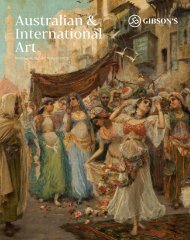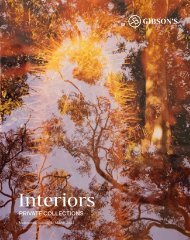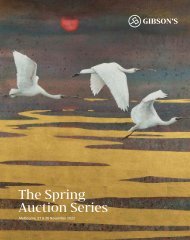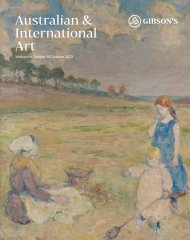GA019 | Australian & International Art
Create successful ePaper yourself
Turn your PDF publications into a flip-book with our unique Google optimized e-Paper software.
17<br />
22<br />
In August of that year, Herbert travelled to Perth expressly to<br />
paint a portrait of a horse named Le Var who had just won the<br />
Coolgardie Cup. There was money at that time on the Western<br />
<strong>Australian</strong> goldfields. In November 1897 Melbourne Punch<br />
commissioned him to produce a coloured picture of Amberite,<br />
winner of the recent Caulfield Cup.<br />
In relation to the painting under discussion (“The Melbourne<br />
Cup 1900), the following paragraph from Table Talk, 15<br />
September 1899 is of special interest. It describes an<br />
exhibition at the Melbourne <strong>Art</strong> Club at that time.<br />
I note that the colours of the jockeys’ silks in the ‘1900’<br />
painting are consistent with colours worn in the 1900 race.<br />
The eventual winner Clean Sweep was raced by ‘Mr F.T.<br />
Forrest’ (the nom-de-course of Frank Cummings) whose<br />
colours were white, blue sleeves and cap. The horse<br />
prominently depicted near the lead at this point is wearing<br />
such colours.<br />
The jockey colours for the runner up Maltster (note correct<br />
spelling) (black, red cap) can also be seen in the painting. I’m<br />
not sure that all the colours in the 1900 race are represented<br />
in the painting.<br />
A further significant point is the viewpoint of the painting. This<br />
to my knowledge is the first time an artist has depicted the<br />
Melbourne Cup or races at Flemington from this viewpoint –<br />
a point of originality by the artist. The open-deck ‘Tattersall’s<br />
Stand’ at the turn was opened in 1889 and was in place until<br />
1913.<br />
Interestingly the newspapers in the 1890s increasingly<br />
were publishing photographs of the races, the horses<br />
and the racecourse. The year 1898 was the first time, to<br />
my knowledge, that photographs appeared showing this<br />
viewpoint.<br />
An important detail in the art work is the distinctive figure of<br />
the man in the (left) foreground of the painting. This is certainly<br />
intended to be Frank Cumming, or “Mr F.T. Forrest”, the owner<br />
of Clean Sweep. The artist has copied the photographic<br />
portrait of Cumming that appeared in the weekly Australasian<br />
on 3 November 1900 (p.29). There is a straight comparison<br />
with the bowler hat, moustache, strap holding the binoculars,<br />
the race book and pencil in hand.<br />
This certainly implies that Frank Cumming either<br />
commissioned the work or was the obvious intended<br />
purchaser for the painting. Cumming had recently been<br />
elected to the committee of the Victoria Amateur Turf Club<br />
(Caulfield), was a wealthy broker from a wealthy pastoralist<br />
family, and owned paintings. He died in 1906 at the age of 44.<br />
I have found no press description of the 1900 painting,<br />
suggesting that it was sold rather than exhibited.<br />
(Dr) Andrew Lemon. AM FRHSV Historian<br />
Author: The History of <strong>Australian</strong> Thoroughbred Racing<br />
(with Harold Freedman et al, artists), Hardie Grant Books 2008,<br />
3 volumes.


